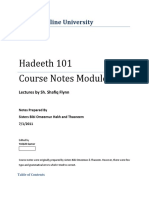0 ratings0% found this document useful (0 votes)
319 viewsSankalpam
Sankalpam
Uploaded by
KARTHIK145sankalpam stothra slokam manthra
how-to, lucid explanation, sanskrit
lanaguage, hindu god, prayer,
Copyright:
© All Rights Reserved
Available Formats
Download as TXT, PDF, TXT or read online from Scribd
Sankalpam
Sankalpam
Uploaded by
KARTHIK1450 ratings0% found this document useful (0 votes)
319 views1 pagesankalpam stothra slokam manthra
how-to, lucid explanation, sanskrit
lanaguage, hindu god, prayer,
Original Title
sankalpam
Copyright
© © All Rights Reserved
Available Formats
TXT, PDF, TXT or read online from Scribd
Share this document
Did you find this document useful?
Is this content inappropriate?
sankalpam stothra slokam manthra
how-to, lucid explanation, sanskrit
lanaguage, hindu god, prayer,
Copyright:
© All Rights Reserved
Available Formats
Download as TXT, PDF, TXT or read online from Scribd
Download as txt, pdf, or txt
0 ratings0% found this document useful (0 votes)
319 views1 pageSankalpam
Sankalpam
Uploaded by
KARTHIK145sankalpam stothra slokam manthra
how-to, lucid explanation, sanskrit
lanaguage, hindu god, prayer,
Copyright:
© All Rights Reserved
Available Formats
Download as TXT, PDF, TXT or read online from Scribd
Download as txt, pdf, or txt
You are on page 1of 1
Meaning of Sankalpam
(Excerpts from 'The Great Hindu Tradition')
The Sankalpa starts with Adhya Brhmanaha, Dwitiya Parardhe, Sweta varaha kalpe,
Vaivasvata manvantare, Ashthavimsati tame, Kali yuge.
Adhya Brahmanaha literally means that the person who does the Sankalpa starts fr
om Brahmas life.
Dwitiya Parardha means Brahmas second Parardha. One Parardha consists of 50 Brahm
a years. Now the second Parardha is running.
Sweta Varaha Kalpa is the first of the thirty Kalpas according to Matsya Purana.
Vaivasvata manvantra: There are fourteen manvantras in a Kalpa, and the present
one is seventh and its name is Vaivasvata manvantra.
Ashthavimsati tame means 18,000 Kalpas has been now completed.
Kaliyuge-Prathame pade means we are in the first quarter of the Kaliyuga.
Jambu Dweepe, Bharata Varshe, Bharata Khande describes the geographical area of
our motherland.
The third part of the sankalpa focuses on the specific date and time of the ritu
al.
The other terminologies that we come across in our sankalpa are:
* The Varsha: There are 60 years in a cycle and each year (Samvatsara) has a na
me. For instance, Jaya is the name for the year 2014-15).
* The Ayana: There are two ayanas in a year viz., Uttarayana (roughly January t
o June) and Dakshinayana (roughly July to December). Each ayana has a period of
six months.
* The Ritu: There are six Ritus (seasons) in a year, viz., (i) Vasanta (ii) Gre
eshma (iii) Varsha (iv) Sharat (v) Hemanta (vi) Shishira.
* The Masa: There are twelve months in a year. They are Mesha, Vrushabha, Mithu
na, Kataka, Simha, Kanya, Tula, Vrichika, Dhanur, Makara, Kumbha, and Meena.
* The Paksha: A paksha consists of 15 days and two pakshas make a month. Shukla
paksha starts the day after amavasya and ends with pournami. Krishna paksha sta
rts the day after pournami and ends with amavasya.
* The Tithi: Every day has a tithi and in a paksha we have 15 such tithis. The
same set will appear in both the Shukla and Krishna pakshas. These are the ordin
al numbers of the days.
* The Vasara: Sunday (Bhanu vasara), Monday (Indu vasara), Tuesday (Bhauma vasa
ra), Wednesday (Sowmya vasara), Thursday (Guru vasara), Friday (Brugu vasara) an
d Saturday (Sthira vasara) are the seven days of the week.
* The Nakshatra: The Hindu calendar has 27 nakshatras during each month, repeat
ed 12 times in a year. The name of the nakshtra of the day is announced as part
of the sankalpa.
Finally, the actual resolve or commitment is chanted: asmakam sakutumbhanam kshem
a concluding with karishye (I shall do).
The karta spells out the purpose of the puja or the ritual, the God or Goddess f
or whom it is done, and the benefits being sought in terms of the health, wealth
etc. of the family of the karta.
You might also like
- Vedadhara - Tamil Brahmin Death Rites - Demystified PDFDocument47 pagesVedadhara - Tamil Brahmin Death Rites - Demystified PDFVi BaNo ratings yet
- Entrepreneurial Finance and Private Equity: (GBUS 844, Fall 2002)Document19 pagesEntrepreneurial Finance and Private Equity: (GBUS 844, Fall 2002)KARTHIK145No ratings yet
- Slogams - Sri Rama Apaduddharaka StotramDocument2 pagesSlogams - Sri Rama Apaduddharaka StotramKARTHIK145100% (3)
- The Fruit of Islam and The Secret Relationship Between Blacks and Jews-2Document8 pagesThe Fruit of Islam and The Secret Relationship Between Blacks and Jews-2willbfree100% (3)
- Siddhanta Deepika Volume 3Document255 pagesSiddhanta Deepika Volume 3BosRajNo ratings yet
- Sai StotraDocument5 pagesSai StotraSwetha Chada100% (1)
- MahalayamDocument6 pagesMahalayamSai PrasadNo ratings yet
- Charama SlokamsDocument1 pageCharama Slokamsraj100% (2)
- Sloka From Sri Leela SukhaDocument2 pagesSloka From Sri Leela SukhasrimathaNo ratings yet
- 3S Why SandhyavandanDocument49 pages3S Why SandhyavandanvivektonapiNo ratings yet
- The Shree Krishna Charama Sloka: Sarva Dharmaan ParityajyaDocument18 pagesThe Shree Krishna Charama Sloka: Sarva Dharmaan ParityajyaVj Laxmanan100% (1)
- Avvaiyar Didactic Poetry in Tamil and EnglishDocument25 pagesAvvaiyar Didactic Poetry in Tamil and Englishkrishnarajmd100% (2)
- Narendra ModiDocument7 pagesNarendra ModiProtimesh GuptaNo ratings yet
- Gayatri Mantra - WikipediaDocument8 pagesGayatri Mantra - WikipediaWilhelm Richard WagnerNo ratings yet
- Lagnasphutam FormatDocument7 pagesLagnasphutam Formatcuteleo23No ratings yet
- RK Dal Mia ColorDocument12 pagesRK Dal Mia ColorKings ParkNo ratings yet
- Navgraha StotramDocument3 pagesNavgraha Stotramapi-3814149100% (1)
- AANVIKSHIKIDocument12 pagesAANVIKSHIKIsandeepNo ratings yet
- Navagarha StotramDocument4 pagesNavagarha StotramsrikanranNo ratings yet
- Aru Padai VeedugalDocument19 pagesAru Padai VeedugalVijay KumarNo ratings yet
- NavagrahaSuktam SanskritDocument5 pagesNavagrahaSuktam SanskritShankar GaneshNo ratings yet
- Guru-Stotram-1 Tamil PDF File7790Document5 pagesGuru-Stotram-1 Tamil PDF File7790Krishnan KozhumamNo ratings yet
- Saneeswara GayathriDocument11 pagesSaneeswara Gayathriapi-26073219100% (1)
- ShivPuran Part1!1!80pDocument80 pagesShivPuran Part1!1!80pLaura Vrabec100% (1)
- What Is Sri VidyaDocument2 pagesWhat Is Sri VidyaVasantha KallurayaNo ratings yet
- Dheerga Sumangali PoojaDocument14 pagesDheerga Sumangali Poojan19173986100% (1)
- Madhvan AmaDocument77 pagesMadhvan AmaKeshav Bhat100% (3)
- Aaranyam, Upanishad&GhanamDocument216 pagesAaranyam, Upanishad&GhanamsrikanthmicNo ratings yet
- Secret Revealed How To Calculate Agnivasa For Muhurat - Mysticism Blog On SpeakingtreeDocument2 pagesSecret Revealed How To Calculate Agnivasa For Muhurat - Mysticism Blog On SpeakingtreemspareekNo ratings yet
- Achyutashtakam - in Sanskrit With MeaningDocument6 pagesAchyutashtakam - in Sanskrit With MeaningPramod VasudevNo ratings yet
- ArunaprasnaDocument8 pagesArunaprasnaAnonymous DLEF3GvNo ratings yet
- PushkaraDocument12 pagesPushkaraRajaram DasaNo ratings yet
- Brahmanda Darshana-20070107Document25 pagesBrahmanda Darshana-20070107api-26090714No ratings yet
- Tamil Calendar - WikipediaDocument14 pagesTamil Calendar - WikipediaVickyNo ratings yet
- Veda para Yan AmDocument8 pagesVeda para Yan AmKaushikmahadev NarayananNo ratings yet
- Navagraha Samuchaya SandhiDocument2 pagesNavagraha Samuchaya SandhidsncsfvxjhNo ratings yet
- TCC Written Exam ShortlistDocument249 pagesTCC Written Exam ShortlistJamesNo ratings yet
- II Maha Mrityunjaya Mantra IIDocument2 pagesII Maha Mrityunjaya Mantra IIMahi Pati JoshiNo ratings yet
- Upakarma+&+yagnopavItadhAraNam HDocument13 pagesUpakarma+&+yagnopavItadhAraNam Hmadhurao2684No ratings yet
- Gayathri Japam ProcedureDocument2 pagesGayathri Japam ProcedureKARTHIK145No ratings yet
- Hamsa UpanishadDocument3 pagesHamsa UpanishadShashi Kiran ReddyNo ratings yet
- Navarathri Stotrams CompilationDocument77 pagesNavarathri Stotrams CompilationvlaxmananNo ratings yet
- A Day in Ananthalwan ThirumaligaiDocument10 pagesA Day in Ananthalwan Thirumaligaiapi-3836332No ratings yet
- Raja Thatha's Stotra Translations - Bhagya SukthamDocument3 pagesRaja Thatha's Stotra Translations - Bhagya SukthamProf C.S.PurushothamanNo ratings yet
- Prapanna ParijataDocument41 pagesPrapanna Parijatamicrodharam100% (1)
- Ȱ Sriȱsathyaȱsaiȱbooksȱandȱpublicationsȱtrust, Ȱ Prasanthiȱnilayam.ȰDocument2 pagesȰ Sriȱsathyaȱsaiȱbooksȱandȱpublicationsȱtrust, Ȱ Prasanthiȱnilayam.Ȱihtnasakirah918No ratings yet
- Origin of The Universe - On Nasadiya SuktamDocument5 pagesOrigin of The Universe - On Nasadiya SuktamRaghava Akshintala100% (1)
- GanapatiDocument4 pagesGanapatiNicolau Morar100% (1)
- Bhagavatam - The Book of GodDocument102 pagesBhagavatam - The Book of Godaexb123100% (1)
- Sudarshana Chakra AshtakamDocument4 pagesSudarshana Chakra AshtakamArun VasanNo ratings yet
- Surya GrahanaDocument9 pagesSurya Grahananaraharisumadhwa100% (1)
- Manu SmrutiDocument112 pagesManu SmrutiAtul Tripathi100% (1)
- Ramanauj Charitra PDFDocument30 pagesRamanauj Charitra PDFAnonymous t6TMYaESDNo ratings yet
- Maha Mrityunjay MantraDocument2 pagesMaha Mrityunjay Mantraapi-26172340100% (1)
- Laws of PerceptionDocument38 pagesLaws of PerceptionanupraipurNo ratings yet
- Vastu Srividya Energy ToolsDocument10 pagesVastu Srividya Energy ToolsAneesh Ace AryanNo ratings yet
- Navraathri & Dussehra: Dhurgaa Pooja / Mysore Dasara / Bastar Dussehra / Kullu Dussehra / Kanjak Pooja / Kumari Pooja / Dasain / Golu / Bommala Koluvu / Bathukamma Panduga / Saraswathee Pooja / Vijaya Dasami / Aayudha PoojaFrom EverandNavraathri & Dussehra: Dhurgaa Pooja / Mysore Dasara / Bastar Dussehra / Kullu Dussehra / Kanjak Pooja / Kumari Pooja / Dasain / Golu / Bommala Koluvu / Bathukamma Panduga / Saraswathee Pooja / Vijaya Dasami / Aayudha PoojaNo ratings yet
- Executive Programme In: Business ManagementDocument4 pagesExecutive Programme In: Business ManagementKARTHIK145No ratings yet
- Jan W Hbs People SpaceDocument2 pagesJan W Hbs People SpaceKARTHIK145No ratings yet
- ePGPx IIM-RDocument6 pagesePGPx IIM-RKARTHIK145No ratings yet
- EPGP Brochure 2017 18Document24 pagesEPGP Brochure 2017 18KARTHIK145No ratings yet
- M16436 HE Brief Cases FNLDocument8 pagesM16436 HE Brief Cases FNLKARTHIK145No ratings yet
- Org BehaviourDocument16 pagesOrg BehaviourKARTHIK14550% (4)
- M00114 CC Marketing Sheet FNL WebDocument2 pagesM00114 CC Marketing Sheet FNL WebKARTHIK1450% (2)
- 2018A MKTG777001 8921600eDocument13 pages2018A MKTG777001 8921600eKARTHIK145No ratings yet
- Vx420 Vincent Chang Su15Document7 pagesVx420 Vincent Chang Su15KARTHIK145No ratings yet
- I Introduction: Globalization: Globe Assignment QuestionsDocument11 pagesI Introduction: Globalization: Globe Assignment QuestionsKARTHIK145No ratings yet
- Strategy: Articles - Books & Chapters - Cases - Core Curriculum Course Modules - Simulations - VideoDocument16 pagesStrategy: Articles - Books & Chapters - Cases - Core Curriculum Course Modules - Simulations - VideoKARTHIK1450% (1)
- Entrepreneurship: Articles Books & Chapters Cases Core Curriculum Course Modules - Simulations - VideoDocument16 pagesEntrepreneurship: Articles Books & Chapters Cases Core Curriculum Course Modules - Simulations - VideoKARTHIK145100% (4)
- Entrepreneurship: Articles Books & Chapters Cases Core Curriculum Course Modules - Simulations - VideoDocument16 pagesEntrepreneurship: Articles Books & Chapters Cases Core Curriculum Course Modules - Simulations - VideoKARTHIK145100% (4)
- Teaching Materials: An Interview With Michael E. PorterDocument24 pagesTeaching Materials: An Interview With Michael E. PorterKARTHIK145No ratings yet
- Operations ManagementDocument10 pagesOperations ManagementKARTHIK145No ratings yet
- M00186 CC Sheet FinanceDocument2 pagesM00186 CC Sheet FinanceKARTHIK145No ratings yet
- Gayathri Japam ProcedureDocument2 pagesGayathri Japam ProcedureKARTHIK145No ratings yet
- MGMT573 Kim, Sung, Min Fa2014Document10 pagesMGMT573 Kim, Sung, Min Fa2014KARTHIK145No ratings yet
- Post Graduate Programme 2015-2016: Indian Institute of Management, CalcuttaDocument3 pagesPost Graduate Programme 2015-2016: Indian Institute of Management, CalcuttaKARTHIK145No ratings yet
- IESE Entrepreneurship ReportDocument56 pagesIESE Entrepreneurship ReportKARTHIK145No ratings yet
- Style Up and Catwalk Out!: Get Styled by Celebrity ExpertDocument1 pageStyle Up and Catwalk Out!: Get Styled by Celebrity ExpertKARTHIK145No ratings yet
- COMM 2012 Syllabus PDFDocument9 pagesCOMM 2012 Syllabus PDFKARTHIK145No ratings yet
- Gayathri JapamDocument1 pageGayathri JapamKARTHIK145No ratings yet
- Profile: No.34, Pillaiyar Koil Street, Old Tambaram, Chennai-600 045. Ph.044-43159605, Email.: Web.Document4 pagesProfile: No.34, Pillaiyar Koil Street, Old Tambaram, Chennai-600 045. Ph.044-43159605, Email.: Web.KARTHIK145No ratings yet
- Name: Lidiawati Grade: Xii Mipa 6 English Task 9: Writing The Legend StoryDocument8 pagesName: Lidiawati Grade: Xii Mipa 6 English Task 9: Writing The Legend StoryMANA GADANo ratings yet
- Panpsychism and AvatarsDocument166 pagesPanpsychism and AvatarsHarshoi Krishanna100% (1)
- Michel Valsan-Notas Sobre El Sheij Al 'AlawiDocument5 pagesMichel Valsan-Notas Sobre El Sheij Al 'AlawiPablo BaldomaNo ratings yet
- Delhi SultanateDocument1 pageDelhi SultanateMuhammad Yousif GanjlaniNo ratings yet
- Types of ManifestosDocument2 pagesTypes of ManifestosZyanya Lindzei Teofilo CoyoyNo ratings yet
- Roman Silver Saxon GreedDocument24 pagesRoman Silver Saxon GreedMikeNo ratings yet
- Cek HeniDocument22 pagesCek Henipromkespuskesmascilteng1No ratings yet
- Courtship That Glorifies GodDocument9 pagesCourtship That Glorifies GodNne Ekeh100% (1)
- Cursuri EnglezaDocument22 pagesCursuri Englezadan__79No ratings yet
- Maher Zain: Insha Allah Lyrics - Inshallah LyricsDocument14 pagesMaher Zain: Insha Allah Lyrics - Inshallah LyricsFarhanis TajudinNo ratings yet
- Truth in The Inward Parts v4Document296 pagesTruth in The Inward Parts v4Daniel Rodrigo CezarNo ratings yet
- UntitledDocument666 pagesUntitledSilih fitriasiNo ratings yet
- 2023 SeptemberDocument15 pages2023 SeptemberFaith Lutheran ChurchNo ratings yet
- Asti, Bhati, Priyam, Nama, Rupam - Peter BonniciDocument4 pagesAsti, Bhati, Priyam, Nama, Rupam - Peter BonniciValentin ConstantinNo ratings yet
- Erq116 00Document3 pagesErq116 00javierNo ratings yet
- Local Media7248563378145217554Document9 pagesLocal Media7248563378145217554Cyrss BaldemosNo ratings yet
- Mtyhology and Folklore Third Generations DeitiesDocument22 pagesMtyhology and Folklore Third Generations DeitiesAljon AstillaNo ratings yet
- Activity 3 - Ge 2Document2 pagesActivity 3 - Ge 2Der LasNo ratings yet
- Script All The Lonely PeopleDocument8 pagesScript All The Lonely PeopleNicholas DykesNo ratings yet
- Hadeeth 101 Omar Yaqoub Mod 1 and 2 RewriteDocument32 pagesHadeeth 101 Omar Yaqoub Mod 1 and 2 RewriteSaajid AmraNo ratings yet
- GE5 EssayDocument1 pageGE5 EssayMohamad Al-Farid UlangkayaNo ratings yet
- Absensi OT2023 Form - Google FormsDocument124 pagesAbsensi OT2023 Form - Google Formsali.usmanNo ratings yet
- The Religious Response:: The Role of Religion in EthicsDocument10 pagesThe Religious Response:: The Role of Religion in Ethicsrowela cristobalNo ratings yet
- List of Symbols of States Union TerritoriesDocument4 pagesList of Symbols of States Union TerritoriesSanjeev Arya साहिबNo ratings yet
- Uts MoneyDocument2 pagesUts MoneyGaile YabutNo ratings yet
- Yogic-Perception-Meditation-and-Altered-States-of-Consciouness Eli FrancoDocument480 pagesYogic-Perception-Meditation-and-Altered-States-of-Consciouness Eli Francosillypolo100% (4)
- Unit 1 BhagavadDocument4 pagesUnit 1 Bhagavadviraj malareeNo ratings yet
- North India After Mauryas and SungasDocument3 pagesNorth India After Mauryas and SungasAbhinav Singh1No ratings yet
















































































































